SCOTUS goes nuclear: Justices’ decision could seal spent fuel storage options for decades
By Riley Fisher, Muhammad Abdussami, Aditi Verma | February 20, 2025
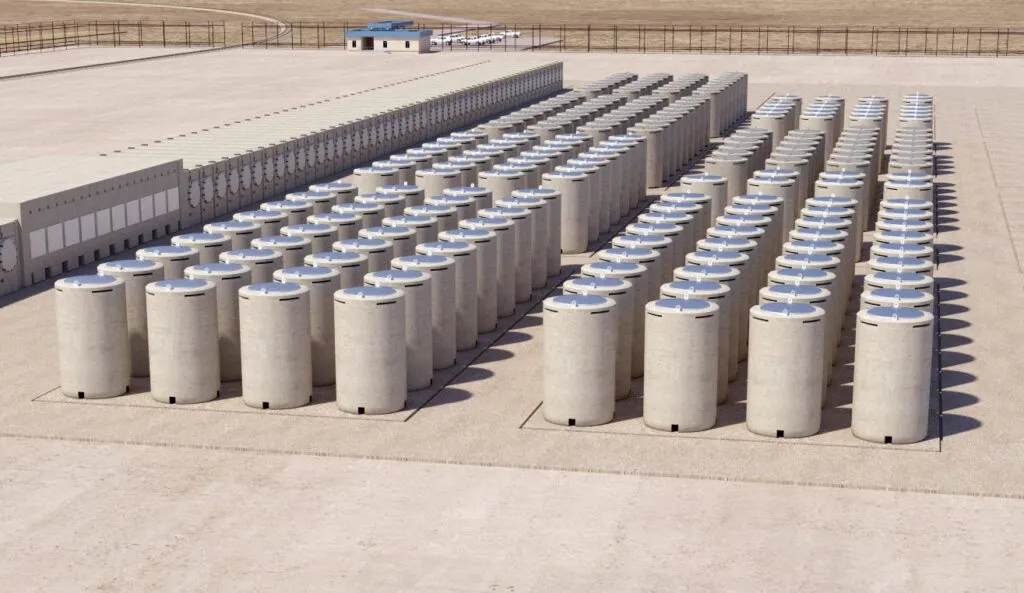 Orano USA and Waste Control Specialists formed a joint venture, named Interim Storage Partners, to license a consolidated interim storage facility for spent nuclear fuel at the existing WCS disposal site in Andrews County, Texas. The Supreme Court will rule whether the Nuclear Regulatory Commission had authority to grant a construction and operation license for the privately-owned facility. (Credit: Interim Storage Partners)
Orano USA and Waste Control Specialists formed a joint venture, named Interim Storage Partners, to license a consolidated interim storage facility for spent nuclear fuel at the existing WCS disposal site in Andrews County, Texas. The Supreme Court will rule whether the Nuclear Regulatory Commission had authority to grant a construction and operation license for the privately-owned facility. (Credit: Interim Storage Partners)
US nuclear waste policy is at a critical turning point. Mired in decades of disappointments and shortcomings, the monkey on nuclear power’s back is just weeks away from being freed—or being strapped in place. The issue at hand: whether the Nuclear Regulatory Commission (NRC) had the legal authority to grant a permit for the construction and operation of a privately-owned temporary spent nuclear fuel storage facility in Texas.
On March 5, 2025, representatives from the NRC and the state of Texas will convene in Washington, D.C., to argue this issue in front of the United States Supreme Court. The NRC v. Texas case will end a battle of nearly three and a half years over the legality of privately-owned interim nuclear waste storage in the United States. However, while the Supreme Court’s ruling will settle the battle, it will resolve only one aspect of the US nuclear waste management problem.
A ruling favoring the NRC would help the nuclear waste problem in the short term but might harm the long-term management situation, allowing the consolidation of spent nuclear fuel at interim storage facilities—a state of affairs that could place new constraints on the permanent solution of geological disposal. Conversely, a ruling against the NRC would hurt the waste problem short-term by halting interim storage plans—including those of Interim Storage Partners in Texas and Holtec International in New Mexico—but it would leave future permanent storage options unconstrained.
Temporary storage. For more than 40 years, temporary, consolidated nuclear waste storage has been a hot-button issue. The Nuclear Waste Policy Act of 1982 tasked the president and the Energy Department with identifying, constructing, and operating nuclear waste storage facilities in underground repositories. With this act, Congress intended to create a program that permanently stowed away the hazardous waste produced by nuclear power operations.
The original provisions of the Nuclear Waste Policy Act gave the president four years to start the construction of a geologic repository site following congressional approval. During this process, nuclear power plants were still operating and producing spent nuclear fuel, and Congress clarified that plant operators were primarily responsible for waste management while the executive branch did their repository siting and construction work. Under exceptional circumstances, however, the federal government was allowed to provide a limited amount of “interim” storage before the waste was transferred to a permanent facility. The federal interim storage program would temporarily consolidate spent fuel away from reactor sites that have limited capacity.
But when efforts for a permanent repository at Yucca Mountain in Nevada stalled, the role of consolidated interim storage was put in a precarious position. Spent fuel continued to accumulate at nuclear power plants across the country, the federal government could not provide more temporary storage because it would violate the Nuclear Waste Policy Act, and the NRC did not have explicit authority to license an external body to create temporary storage. This tension is the impetus for NRC v. Texas case now at the Supreme Court.
There are a variety of arguments both for and against temporary storage of commercial spent nuclear fuel in the United States. Proponents cite that reactor host communities should not be subjected to living near radioactive waste for more time than they initially consented; interim storage, they say, would increase safety and economic efficiency through consolidation. Critics, in contrast, argue that a community near an interim facility risks the same fate of non-consent in the event of further delay in creating a permanent waste repository and that the safety risks from additional transportation and shuffling outweigh the benefits of consolidation.
Ultimately, the Supreme Court will not be hearing technical, economic, or social arguments in this case; the matters of interest are purely legal. These legal interpretations, however, will have profound implications for how commercial spent nuclear fuel is handled until plans for permanent repositories are developed.
Lower court’s contradictory ruling. Two main questions will be argued in NRC v. Texas. The first is a matter of administrative process and pertains to whether Texas had the legal right to challenge the NRC in the first place. Texas first challenged the commission under the 1950 Hobbs Act (which is not the Hobbs Act used in criminal prosecutions of organized crime), an administrative law statute that gives “aggrieved parties” the right to challenge federal agency actions. The NRC claims Texas did not follow proper procedure to be considered an aggrieved party and, therefore, did not have authority to challenge the license.
The second question is a matter of the function and authority of the NRC and is rooted in the language of the Atomic Energy Act of 1954. Texas argues that the NRC only has authority to grant temporary spent nuclear fuel storage licenses on the site of the reactor from which the waste originated. Therefore, Texas claims, the commission had no right to grant the license for a temporary storage facility in the state. The NRC, however, cites multiple previous court decisions that uphold this authorization. These federal-state disputes make a case like this ripe for Supreme Court intervention.
Like most other Supreme Court cases, NRC v. Texas is an appeal of a previously decided case in a lower court: Texas v. NRC. The case started after the NRC issued a license to Interim Storage Partners, LLC, for the construction and operation of an interim nuclear waste facility in Andrews County, Texas, which was to start construction in September 2021. That same month, the state of Texas submitted a petition to the Fifth Circuit Court of Appeals to block construction. The court held oral arguments in August 2022 and eventually sided with Texas. The court affirmed that Texas was a proper party aggrieved, as they submitted comments to the NRC in November 2020 and, therefore, made themselves part of the appropriate proceedings. The court also stated that the NRC did not have congressional authorization to issue this license, as “the [Atomic Energy] Act authorizes the Commission to issue such licenses only for certain enumerated purposes—none of which encompass storage or disposal of material as radioactive as spent nuclear fuel.” Interim Storage Partners’ license was revoked following the Fifth Circuit Court’s decision.
The decision of the Fifth Circuit openly contradicts previous court rulings.
In the 2004 case Bullcreek v. NRC, the DC Circuit Court sided with the NRC and found that they had the legal authority to issue licenses for privately-owned spent fuel facilities. This case was brought on by Skull Valley Band of Goshute Indians members to challenge the legality of an interim facility license within the Band’s borders. Relating to the same license, the 2004 case Skull Valley Band v. Nielson, which was argued in the Tenth Circuit Court, cites Bullcreek and reaffirms the NRC’s authority. Finally, in February 2023, just eight months before the opinion was issued on the original Texas case, the DC Circuit Court upheld its prior ruling of Bullcreek by dismissing a petition from the state of New Mexico against the same license issued to Interim Storage Partners (Balderas v. NRC). If this series of cases has continuously reaffirmed the NRC’s authority to issue these sorts of licenses, why now is the Fifth Circuit claiming otherwise?
In the opinion issued, the Fifth Circuit is quick to dismiss the rulings of Bullcreek, Skull Valley, and the recent Balderas. They argue about Bullcreek that, “The D.C. Circuit essentially assumed that the Atomic Energy Act had granted the Commission authority to license away-from-reactor storage facilities, despite explicitly recognizing that the Act ‘does not specifically refer to the storage or disposal of spent nuclear fuel’,” adding, “the D.C. Circuit provided no textual basis for its assumption.” Because Skull Valley and Balderas were based on the arguments made in Bullcreek, the Fifth Circuit holds each case equally void.
As a result of this significant divide between courts, the NRC petitioned the US Supreme Court to rehear the Fifth Circuit’s decision. The petition was granted by the Supreme Court in December 2024 with the intent to settle these divisions and ambiguities.
NRC’s appeal. The Supreme Court may decide in a variety of ways concerning Texas’ authority under the Hobbs Act and the NRC’s authority under the Atomic Energy Act and the Nuclear Waste Policy Act. While clarification as to whether Texas was a proper “party aggrieved” is certainly important, it is likely the Supreme Court will take the opportunity to define the scope of the NRC’s abilities regardless of the interpretation of the Hobbs Act. Even if the Supreme Court finds that Texas was not a proper “party aggrieved,” the Court will still have the ability to hold the issued license void despite improper administrative procedures taken by Texas.
The discussion around NRC authority will likely center around two issues: the development of the “major questions doctrine” and the overruling of the Chevron doctrine. The major questions doctrine was developed in the 2022 case West Virginia v. EPA, and states that “if an agency seeks to decide an issue of major national significance, its action must be supported by clear congressional authorization.” This was applied to assert that the EPA could not regulate greenhouse gas emissions as it was considered to be an issue of major significance and the EPA did not have explicit congressional approval. The Chevron doctrine, as referenced in Bullcreek, is the principle that “the court typically defers … to an agency’s interpretation of its own jurisdiction under a statute that it implements.” This doctrine was overturned in the 2024 case Loper Bright Enterprises v. Raimondo, and now courts are primarily responsible for interpreting regulatory jurisdiction as opposed to the regulator. Because there is potential ambiguity in the Atomic Energy Act and the Nuclear Waste Policy Act, the Supreme Court now has the responsibility to interpret those statutes—as opposed to deferring to the NRC’s interpretations—in the wake of Loper Bright.
Because there is no explicit authorization in either act, the Supreme Court will likely rule that the NRC lacks clear congressional approval. If this is the case, then the Supreme Court will have to decide whether private, off-reactor spent fuel storage is a matter of major national significance— also known as a “major question.” While the Supreme Court has yet to hear arguments on this specific issue, there are reasonable explanations for either ruling.
Some legal experts argue that private off-reactor waste is not a major question. Because on-site storage is exorbitantly expensive, a consolidated interim facility operated by a private entity will likely alleviate taxpayers’ burden. The West Virginia case was decided partially on its nationwide economic implications, but such implications are not present in this case. Another argument is that the NRC issued its regulations for private off-reactor storage two years before the Nuclear Waste Policy Act was passed. The fact that Congress did not revoke this authority from the NRC when passing the act could be interpreted as implicit approval. If the Supreme Court agrees with this perspective, it will likely allow Interim Storage Partners’ license to stand, even if the NRC did not have the explicit authority to issue that license.
Other arguments exist for this issue being a major question. Like what was argued in the Fifth Circuit, the original purpose of the Nuclear Waste Policy Act was to prioritize the construction of permanent repositories, which contradicts what the NRC is currently pursuing. In addition, if a precedent for temporary solutions is set, efforts for a permanent repository may stall further, as there are no measures to hold the US government responsible for finding a solution.
Because there is no nationwide consensus on how nuclear waste ought to be managed, the Supreme Court may instead wish to make Congress refine its vision and deem this issue a major question. If private off-site storage is considered a major question, then the license will stand vacated.
No perfect ruling. Either ruling will no doubt have vast consequences on the US nuclear waste management problem. A ruling in favor of the NRC would provide support for the nuclear industry’s ability to manage spent fuel, particularly during the continuous delays in permanent repository development. This result could also encourage private investment in nuclear energy by providing clearer pathways for managing waste, potentially revitalizing confidence in the industry’s long-term viability. However, a decision in NRC’s favor would not resolve all concerns with nuclear waste management. Many communities oppose the siting of temporary storage facilities, citing safety risks and the lack of a permanent solution. Resistance will continue to grow at local and state levels if these broader concerns go unaddressed. Congress will need to continue developing directives that strengthen and complement private solutions to waste management. A ruling in favor of the NRC would undoubtedly be a win for the nuclear industry, the federal government, and reactor host communities, as short-term pressures caused by on-site waste storage can finally be addressed. In the long term, this ruling will do little to permanently solve the waste problem and may place the nuclear industry into a false sense of security amidst concerns of interim facilities becoming de facto repositories.
If the Supreme Court rules against the NRC, it will create substantial uncertainty for the nuclear industry by rejecting the NRC’s authority to license private off-site storage facilities. Other corporations that currently plan to construct such facilities, such as Holtec International in New Mexico, will risk the revocation of their licenses. Decommissioned reactors with on-site storage may face danger to their storage license renewals, which will force active reactor sites to take in external waste while still generating their own. Situations like these can heighten safety and security risks, as many sites lack the infrastructure or oversight necessary for long-term storage and management.
However, a ruling against the NRC may bring increased attention to the issue and compel Congress to act decisively. By deeming this issue a major question, the Supreme Court would assert that nuclear waste is an issue of national significance and would signal that Congress must chart a new course. Without action, the nuclear waste problem will continue to worsen—although Congressional action may never take place if the court ruled in NRC’s favor, as “immediately good” conditions generally do not beget intervention. A ruling against the NRC will likely be to the immediate detriment of the nuclear industry, the federal government, and reactor host communities. These pressures, however, may urge lawmakers to develop a new, permanent solution once and for all.
In the context of the nuclear waste problem, a ruling in favor of the NRC will be a short-term benefit but bring long-term risks. A ruling against the NRC will be a short-term detriment but may spur renewed action for long-term solutions. Regardless of the Supreme Court’s decision, Congress must dictate a permanent solution, which will be less likely to occur if short-term pressures are alleviated by ruling in favor of the NRC. In the absence of immediate Congressional intervention, the nuclear industry and the Energy Department must still work closely and in good faith with host communities. Anything else will result in complete failure of fair and democratic planning—as has been observed time and time again.
Editor’s note: Arguments on the NRC v. Texas case will be held before the Supreme Court on March 5, 2025. Summaries, audio files, and opinions will be accessible here after the hearing. The Supreme Court will issue its opinion before recess in late June 2025. Proceedings and orders will be made available as they come here.
Together, we make the world safer.
The Bulletin elevates expert voices above the noise. But as an independent nonprofit organization, our operations depend on the support of readers like you. Help us continue to deliver quality journalism that holds leaders accountable. Your support of our work at any level is important. In return, we promise our coverage will be understandable, influential, vigilant, solution-oriented, and fair-minded. Together we can make a difference.



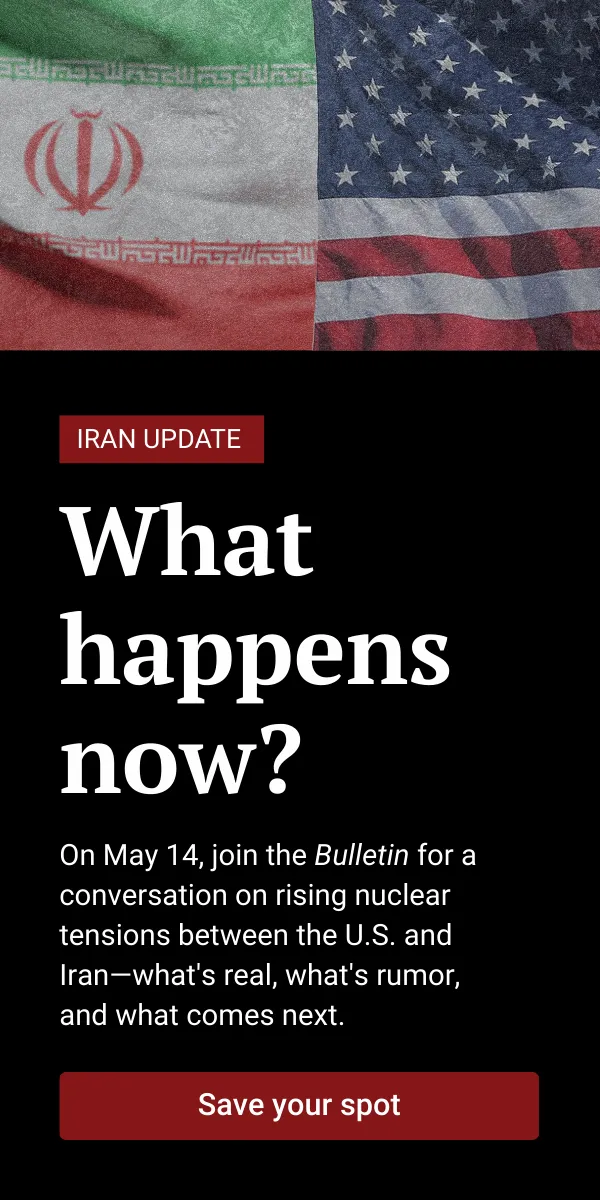


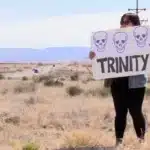
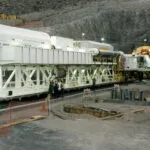

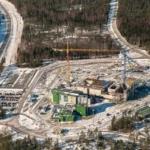

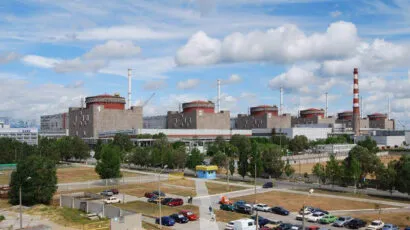
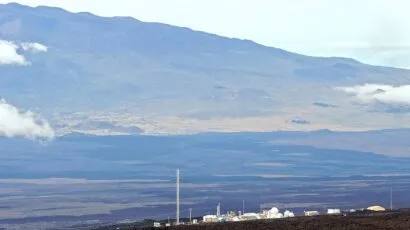
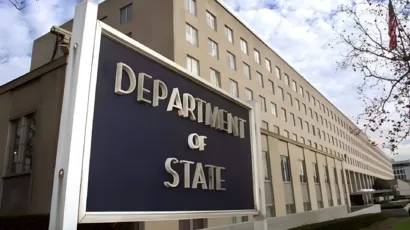
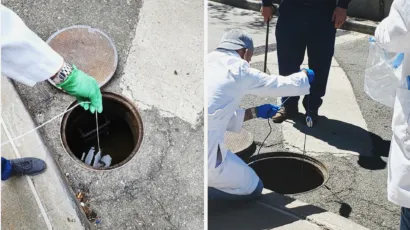
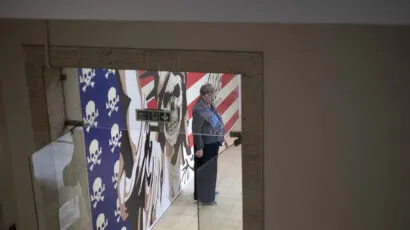

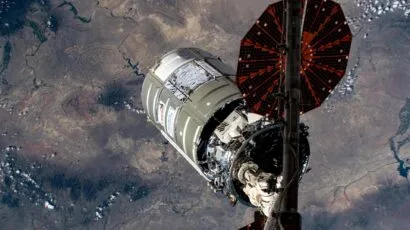
Why are we still litigating the past. No action either pro or con of this current litigation will help solve the real problem of high level waste accumulating across the country and the current lack of any true waste disposal alternatives. The focus should be on the disposal of HLW in deep, really deep, geological repositories like horizontal wellbores below 10,000 feet and not on interim “no-end in sight” surface storage systems which are prone to many adverse actions. Fifty years of near-surface “activity” and billions in costs from “stewardship expenses” to a select group of companies have not solved… Read more »